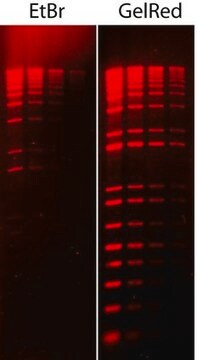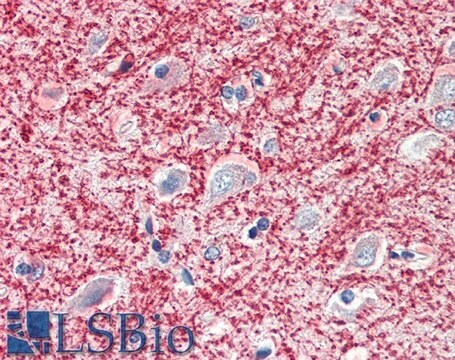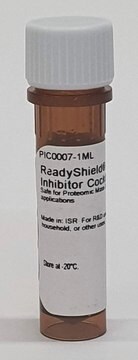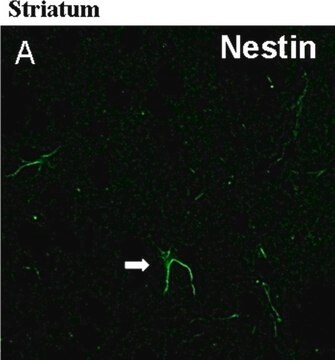MABS197
Anti-PTP1B Antibody, clone FG6-1G
clone FG6-1G, from mouse
Synonim(y):
Tyrosine-protein phosphatase non-receptor type 1, Protein-tyrosine phosphatase 1B, PTP-1B
About This Item
Polecane produkty
pochodzenie biologiczne
mouse
Poziom jakości
forma przeciwciała
purified immunoglobulin
rodzaj przeciwciała
primary antibodies
klon
FG6-1G, monoclonal
reaktywność gatunkowa
human
metody
immunoprecipitation (IP): suitable
western blot: suitable
izotyp
IgG2aκ
numer dostępu NCBI
numer dostępu UniProt
Warunki transportu
wet ice
docelowa modyfikacja potranslacyjna
unmodified
informacje o genach
human ... PTPN1(5770)
Opis ogólny
Specyficzność
Immunogen
Zastosowanie
Signaling
Cytoskeletal Signaling
Immunoprecipitation Analysis: A representative lot from an independent laboratory detected PTP1B in A431 cell lysate (Gulati, P. et al. (2004). EMBO Rep. 5(8):812-817.).
Jakość
Western Blot Analysis: 1 µg/mL of this antibody detected PTP1B in 10 µg of TF-1 cell lysate.
Opis wartości docelowych
Powiązanie
Postać fizyczna
Przechowywanie i stabilność
Komentarz do analizy
TF-1 cell lysate
Inne uwagi
Oświadczenie o zrzeczeniu się odpowiedzialności
Nie możesz znaleźć właściwego produktu?
Wypróbuj nasz Narzędzie selektora produktów.
Kod klasy składowania
12 - Non Combustible Liquids
Klasa zagrożenia wodnego (WGK)
WGK 1
Temperatura zapłonu (°F)
Not applicable
Temperatura zapłonu (°C)
Not applicable
Certyfikaty analizy (CoA)
Poszukaj Certyfikaty analizy (CoA), wpisując numer partii/serii produktów. Numery serii i partii można znaleźć na etykiecie produktu po słowach „seria” lub „partia”.
Masz już ten produkt?
Dokumenty związane z niedawno zakupionymi produktami zostały zamieszczone w Bibliotece dokumentów.
Nasz zespół naukowców ma doświadczenie we wszystkich obszarach badań, w tym w naukach przyrodniczych, materiałoznawstwie, syntezie chemicznej, chromatografii, analityce i wielu innych dziedzinach.
Skontaktuj się z zespołem ds. pomocy technicznej






